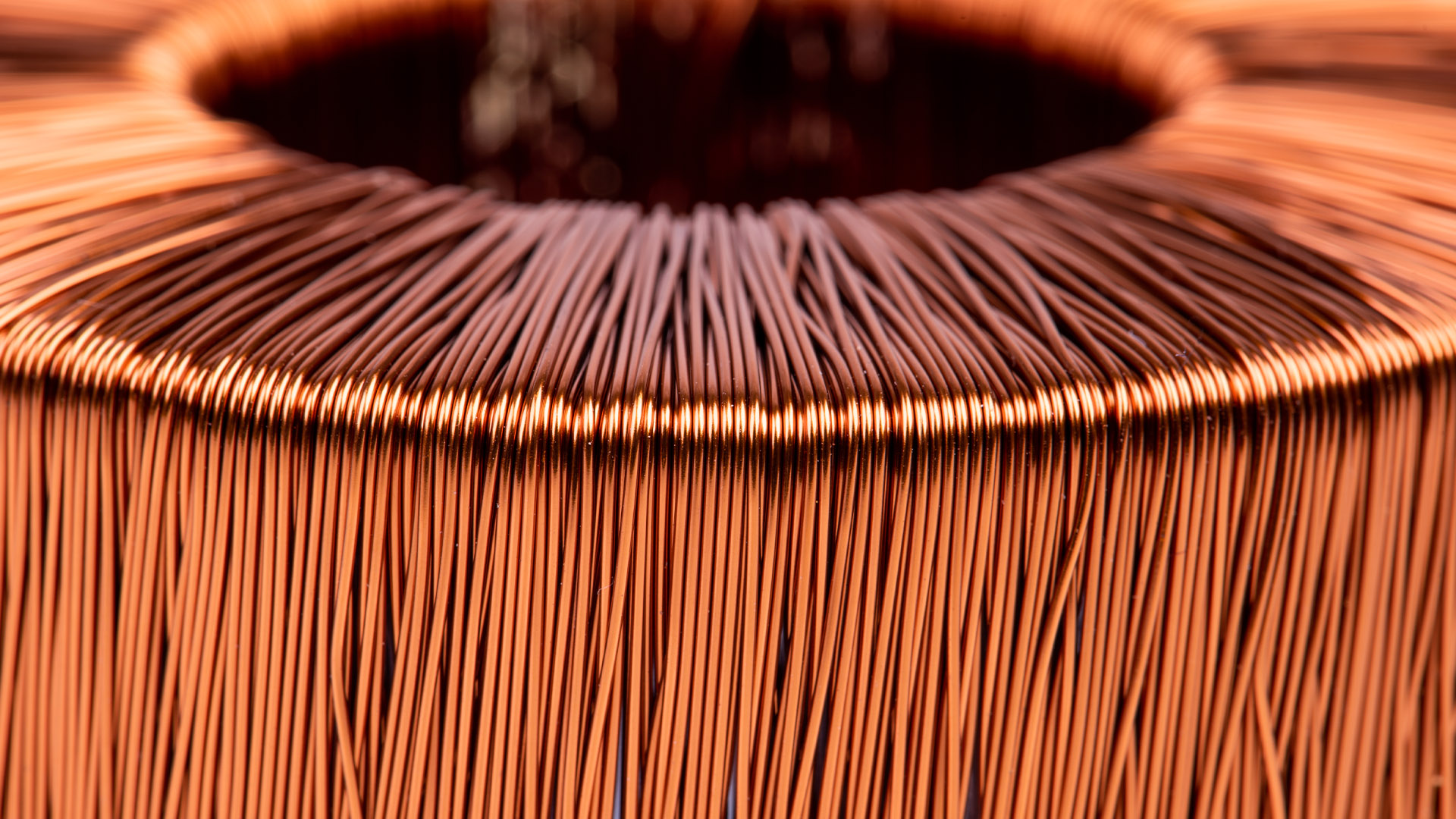Is copper magnetic?
The reason for copper's unique properties comes down to the configuration of its electrons.

Wires, metal pipes, kitchenware: in our everyday experience, copper is not attracted to magnets. Yet lots of strange experiments show copper behaving a bit weirdly around magnetic fields. So what's going on? Is copper magnetic or not? And how can it interact with magnets?
It turns out, all elements have magnetic properties. The metals we typically consider magnetic — iron, nickel and cobalt — are a special class of elements known as ferromagnets, which interact particularly strongly with magnetic fields and make permanent magnets.
But there are several other, much weaker types of magnetism, said Michael Coey, a professor emeritus of physics at Trinity College Dublin. Most elements are either paramagnetic or diamagnetic. "With paramagnets, when you apply a magnetic field, you get a very small magnetization in the direction of the field," he said. This means that the element is very slightly attracted to the magnet, but the effect is only temporary and disappears as soon as the magnet is removed.
"For diamagnets, when you apply a magnetic field, you get an even smaller magnetization in the opposite direction to the field," Coey told Live Science. This creates a tiny repulsive force toward the magnet that, again, disappears without the magnetic field. So, under everyday conditions, we would never notice that paramagnetic and diamagnetic materials have any magnetic properties.
Copper is an example of a diamagnetic material, but exactly which category an element falls into depends on the electrons. These negatively charged particles orbit the central nucleus of an atom in defined layers called shells, which are further divided into levels called the s orbital, the d orbitals and the p orbitals.
Related: Why does copper turn green?
For metals in the center of the periodic table, the s orbital is already filled with two electrons, and moving from left to right across the row, the d orbitals gradually fill with a maximum of 10 electrons. As the orbitals fill up, electrons are forced to pair, and this determines the elements' magnetic properties. Elements with more unpaired electrons are paramagnetic, and those with more paired electrons are diamagnetic.
Get the world’s most fascinating discoveries delivered straight to your inbox.
Each electron also possesses a strange quantum property called spin. The direction (up or down) of all of the electron spins in an atom defines the strength of the magnetism. "When different electrons align their spins in parallel [in the same direction], the atom has a magnetic moment," Coey said. "But if the electrons align their spins antiparallel [in opposite directions], the magnetic moment cancels out."
Copper is in the ninth position, so we would expect it to have two electrons in the s orbital and nine in the d orbitals. But unusually, copper takes one electron out of the full s orbital to completely fill up the d orbitals instead. This means all of the d electrons are paired, with equal numbers spinning up and down. Consequently, there is no magnetic moment, so we don't observe any magnetic behavior under normal conditions.
However, this unusual configuration means that copper can interact with magnets in a different and extremely important way. Magnetism is closely linked with electricity — a phenomenon described in physics by Lenz's law.
"In essence, a changing magnetic field will induce a current within a conductor," said Ernesto Bosque, a physicist at the National High Magnetic Field Laboratory in Florida. "Because copper has such a low electrical resistance, currents can flow very easily in [it]."
It's the unpaired s electron that makes copper such an excellent conductor. This effect, known as electromagnetic induction, is central to how we generate electricity today. "A stator is essentially a set of rotating insulated wires that move around a core. This can be used as a motor or a generator," Bosque told Live Science in an email. The same idea also works in reverse: A current passed through coils of wire can generate a magnetic field in a metal core, creating an electromagnet.
Copper's ability to interact with a magnet, despite not being ferromagnetic, is something we rely on every day to power electronic devices, store data on hard drives, and even slow down roller coasters.

Victoria Atkinson is a freelance science journalist, specializing in chemistry and its interface with the natural and human-made worlds. Currently based in York (UK), she formerly worked as a science content developer at the University of Oxford, and later as a member of the Chemistry World editorial team. Since becoming a freelancer, Victoria has expanded her focus to explore topics from across the sciences and has also worked with Chemistry Review, Neon Squid Publishing and the Open University, amongst others. She has a DPhil in organic chemistry from the University of Oxford.




